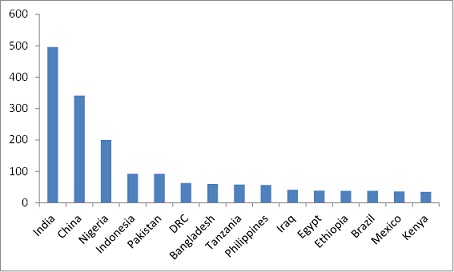A major part of India lives in rural, but a massive number of people are migrating to urban. This process has been going on for decades now and is picking up more pace. Some think that this urbanization is not good for the nation, but if we look back at history of other nations, we will find that almost all the countries where urbanization took place, they saw a tremendous improvement in their economy.
A research report by Oxford Economics’ Global cities estimates that 17 of the 20 fastest-growing cities in the world between 2019 and 2035 will be from India. Studies have also shown that Indian cities are likely to contribute to 70% of India’s GDP by 2030. All of these findings are reflected in the exponential rate of urbanization that the country is undergoing.
In this post we will look at India’s urbanization as it is at the core of India’s growth story.
Urbanization plays a critical role for the country as it aims to become a global economic powerhouse. India is one of the fastest growing economies in the world, aspiring to become a US$5 trillion economy by 2026 and US$40 trillion by 2047, when India marks 100 years since its independence. However, to become a global economic powerhouse, urbanization must be managed successfully.
The huge scale of urbanization
- The number of inhabitants in Indian cities is estimated to have increased almost fourfold between 1970 and 2018, from 109 million to 460 million.
- Already the second-largest urban community in the world, the country is expected to add another 416 million people to its cities by 2050 and have an urban share of population of 50 percent.
Largest expected change in urban population from 2010 – 2050
Source – Urbanization is good for rural poverty (at least in India) (worldbank.org)

As per chart, India has the biggest potential of urbanization.
Why urban cities are more effective for economic growth – agglomeration economies
Cities are the loci of economic growth and innovation, where productive firms, better-paying jobs, and key institutions are located close by. It enables firms and workers to interact closely, cities generate increases in productivity through several channels, collectively known as agglomeration economies. A key implication of the theory is that firms in larger and/or denser cities should be more productive, pay workers higher nominal wages and salaries, and engage more in innovative activities. Compared to rural areas, cities offer more varieties of income opportunities.
Consistent with this, the data strongly suggests that agglomeration economies are very much present in India.
- Cities in India occupy just 3.0% of the nation’s land, but their contribution to gross domestic product (GDP) is a massive 60.0%. Similarly, analysis of estimated district GDP reveals that each percentage point increase in a district’s urban population share is associated with a 2.7% increase in district GDP.
- Firms in India’s larger cities introduce product and process innovations and conduct research and development more often than their counterparts in smaller cities. Specifically, using geo-coded enterprise survey data on more than 8,000 enterprises across 207 Indian cities5 and controlling for a wide range of city and firm characteristics, econometric analysis suggests that firms in a city twice as large as another are more likely to engage by 17.5% in product innovation, 9.9% in process innovation, and 21.2% in research and development.
- Analysis of India’s Periodic Labour Force Survey, 2018–2019 shows that full-time wage and salaried workers in cities with 1.5 million or more residents in 2011 had, on average, 16% higher monthly earnings than their counterparts in smaller cities (and about 36% higher than counterparts in rural areas).
- Manufacturing and modern services, i.e., sectors that are critical enablers of economic dynamism, account for a larger share of employment in larger cities, i.e., 48% as compared with 38% for smaller cities and 18% for rural areas.
- Larger cities tend to have a higher share of regular workers in larger cities as compared with smaller ones (91.2% versus 78.8%).
Source: Microsoft Word – Mod_CEOG_Executive Summary_14052022.docx (niti.gov.in)
Long-term mega investment opportunities
India’s urbanization is the world’s largest ever migration from rural to urban areas. When people move to cities, they need not only a job, but also a lot more like house, vehicle etc. In fact, it creates a gigantic demand for lot many industries. The major ones are listed below –
- Housing/ real estate
- Transportation/auto
- Food
- Textile
- Entertainment
- Consumer durables
If you go in detail, you will see that housing demand will create further demand for cement, steel, furniture etc. So, urbanization is a virtuous cycle that creates demand for almost every sector, and that demand is a very long-term demand.
Urbanization is expected to continue for many more years in India, boosting India Growth Story.